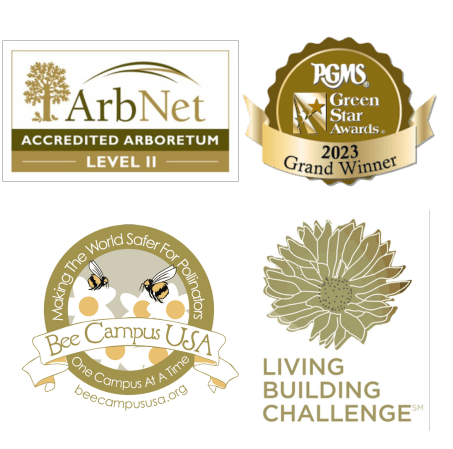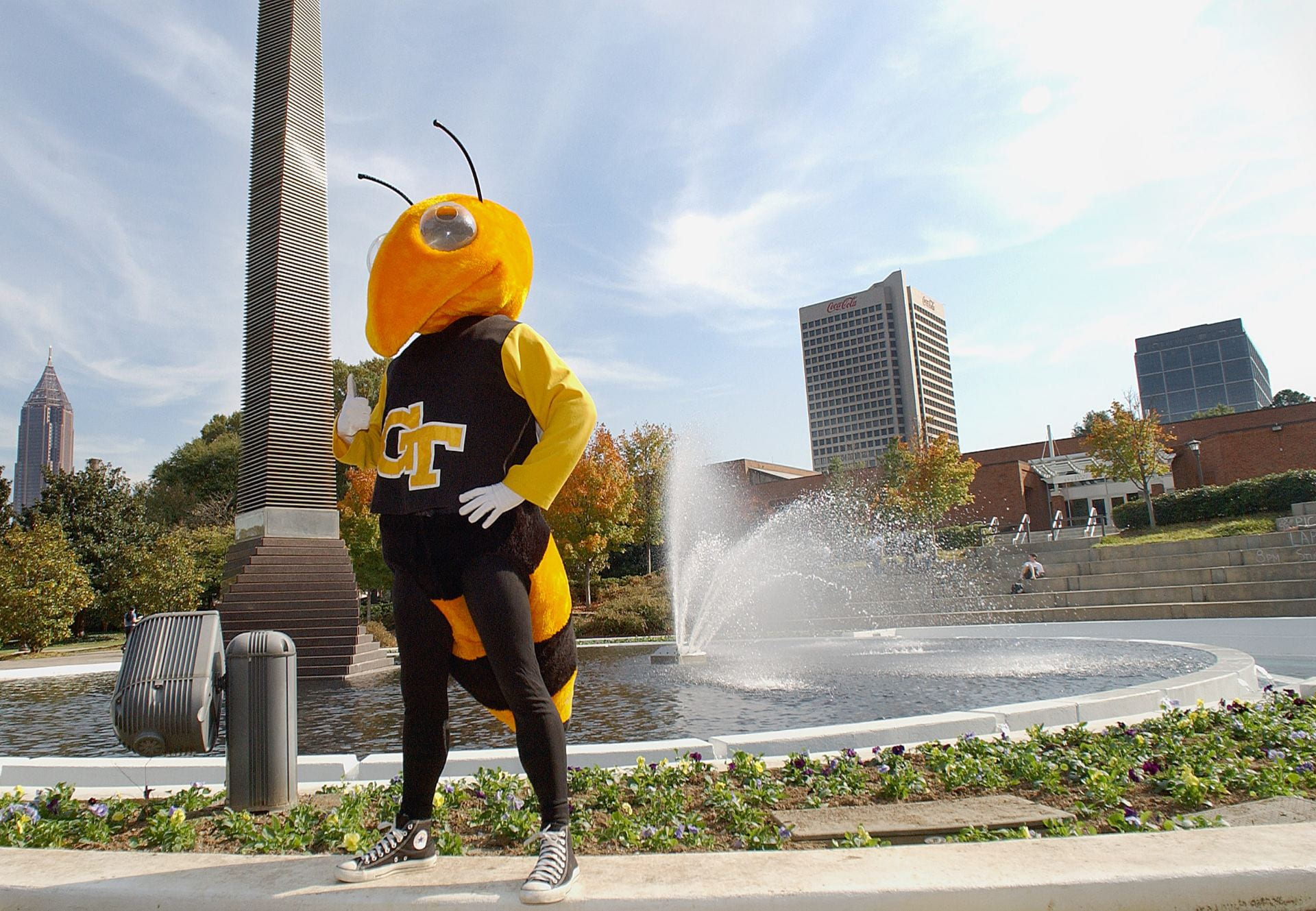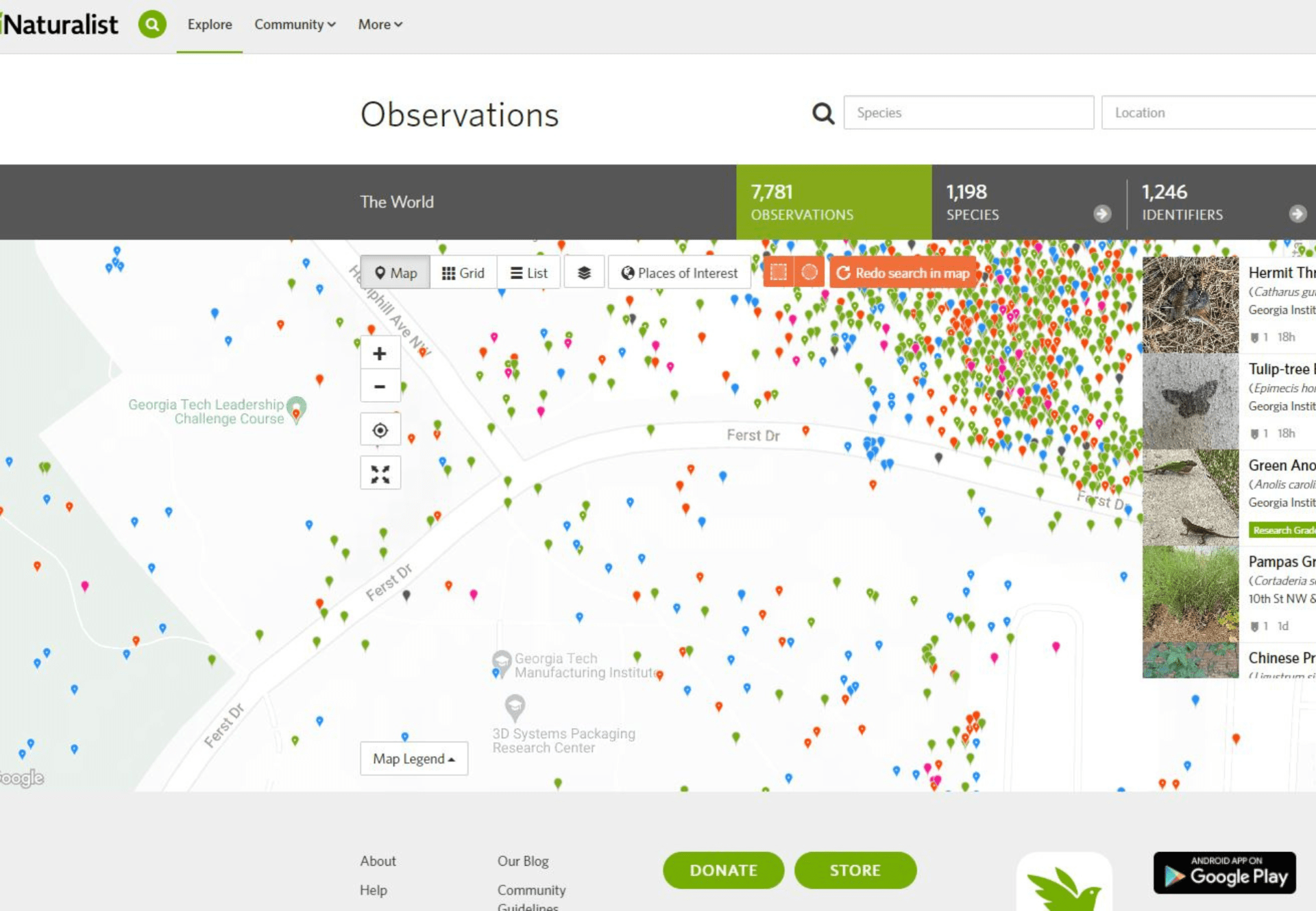Biodiversity at Georgia Tech
An Urban Forest
Georgia Tech’s home campus is located within Atlanta’s city limits, meaning the trees on campus contribute to the city’s overall canopy coverage. Trees are both a major feature of Atlanta’s landscape and a primary contributor to biodiversity on Georgia Tech’s campus. In 2023, Georgia Tech’s campus tree canopy coverage was 22%. It is an important part of the campus design, and plans are in place to continue preserving and expanding it. For example, the 2010 Campus Landscape Plan has a goal to expand canopy coverage to 55% of campus. In addition to beautifying the Tech campus, forests and trees have many co-benefits, including:
- Reducing the urban heat island effect.
- Reducing stormwater runoff.
- Reducing the amount of air pollution.
- Supporting biodiversity and pollinators.
- Improving property values.
- Improving mental and physical health of surrounding communities.
FY 2023 Landscape Data
Georgia Tech campus vegetation plays both an ecological and a design role. Sustainable use of vegetation at Georgia Tech is governed by ecological principles, site assessment, and interface with human use. The objective of Georgia Tech’s Integrated Pest Management (IPM) plan is to reduce the occurrence of pests while ensuring minimal human exposure to health risk and inflicting minimal hazards on the environment.
%
Tree Canopy Coverage
Acres Managed Organically
%
Sustainable Integrated Pest Management

Biodiversity Strategy
Increase Georgia Tech’s tree canopy coverage and biodiversity.

Explore
EcoCommons
The overarching EcoCommons Project envisions 80 acres of green space across campus that aims to mimic a traditional piedmont woodland that follows what the original areas was before being urbanized. Most of the plants on the site are native to this region.
The Kendeda Building's Connection to Ecology
Previously a parking lot, the Kendeda Building site is now a restored natural area with native plants chosen for beauty, resilience, and attracting pollinators. Designed with the Living Building Challenge’s “Place Petal” in mind, it minimizes impact and fosters a nature connection.
STARS
Georgia Tech actively participates in the Sustainability Tracking, Assessment & Rating System (STARS) to benchmark its sustainability efforts. Learn more about biodiversity & land management at GT by exploring the credits below.
Campus Biodiversity
The GT Campus Biodiversity Survey is a project led by Emily Weigel, a senior academic professional in the School of Biological Sciences. It monitors biodiversity on campus by enabling the public to upload observations and identifications of species found around campus. The information is hosted on iNaturalist, a crowdsourced species identification system and an organism occurrence recording tool.


